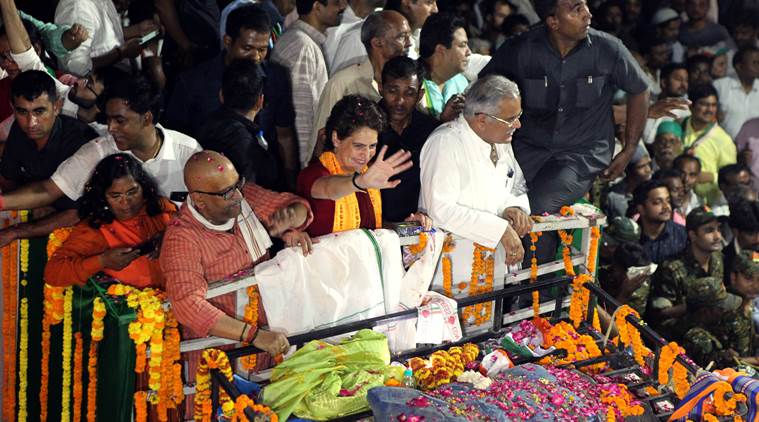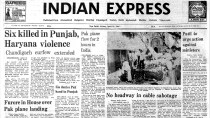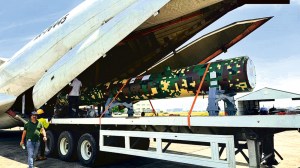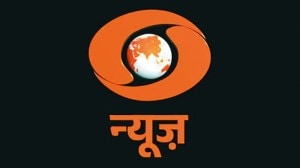- India
- International
Travelling East UP
Almost as a cliché, but a true one, and not trivially so, human warmth and courtesy, as in so many parts of India, make up for the harsh landscape of East UP.
 Congress General Secretary UP (East) Priyanka Gandhi during a road show in Varanasi with party candidate Ajay Rai. Express Photo by Anand Singh
Congress General Secretary UP (East) Priyanka Gandhi during a road show in Varanasi with party candidate Ajay Rai. Express Photo by Anand Singh
The bus would bring a cloud of dust when it came, and leave another cloud when it departed – thus wrote Pramoedya Ananta Toer, a great Indonesian novelist, about his town in Java in the 1950s and 1960s. Those old enough to recall the 1960s in Central and Eastern Uttar Pradesh – East UP, in short — say such clouds accompanied their lives, too. Things have not remained unchanged and time has not stood still, but the sad truth is that even today, the dust clouds hit the eye with considerable ease.
An unfavorable comparison to South India and Western UP, let alone modern-day Indonesia, suggests itself. Electing powerful politicians to power – including Prime Ministers Jawaharlal Nehru, Lal Bahadur Shastri, Indira Gandhi, Rajiv Gandhi, Chandra Shekhar, Atal Behari Vajpayee, Narendra Modi – may be a matter of pride, but it has brought a few good roads only to Lucknow and Varanasi, not to the whole region. The latter would need a significant jump in economic development. One can go miles and miles without any trace of industry or flourishing agriculture. If the cities have squalor, the villages have desolation. Quotidian life in East UP appears to have slender material reliefs.
I was in UP for the elections, traveling by road from Lucknow to Varanasi to Bhadohi. To places like Varanasi, I came after five years; to Lucknow, after ten; to Rae Bareli, after my childhood; and to Amethi, Sultanpur, Jaunpur and Bhadohi, for the first time. Born in UP , I lived in the state till I was twenty, visiting often after my departure for Delhi and then the US, but the frequency of my trips declined in the last decade, as research took me elsewhere in India and the world. The ongoing elections presented an opportunity to revisit places that my eyes, senses and memories have intimately known.
OPINION | Caste and religion still form the bedrock of people’s political understanding in Uttar Pradesh
Almost as a cliché, but a true one, and not trivially so, human warmth and courtesy, as in so many parts of India, make up for the harsh landscape of East UP. And as elsewhere in the country, the stories of the grit of the underprivileged can be uplifting. Perhaps
such spirit exists only because the deprivation has been great, though one should always remember Milan Kundera’s point that suffering, instead of inspiring creativity, can also deaden it.

A Dalit doctor, practising in a Sultanpur village, is surrounded by an army of patients. Among the few to be educated in his generation of Dalits, he offers daily coaching to Dalit students after his clinic hours — so they can compete in the world. Ambedkar, his greatest hero, had emphasized that more than anything else, education would lead to Dalit upliftment. He agrees, but adds another thought, quite Ambedkarian in itself. Dalits have constitutional rights, but only with the consciousness that education brings can those rights be fully realized. For his community, he holds conclaves for awareness enhancement (jaagrookta vardhan) four or five times a year. Like Ambedkar, he has converted to Buddhism. Hinduism has too much hierarchy.
I hate Brahminvaad, he says, but not Brahmins. If they want medical help from a Dalit doctor, he is there to assist. Quite a few come. He also treats those who are unable to pay, assuming they will make up some day. The period of demonetization was especially tough. Many patients had no cash, but his medical commitment remained undeterred.
It is election time. Our conversation soon gravitates towards politics. What is his assessment of the Modi regime? Modi’s politics, he says, is about entrenching inequalities (asamaanata ki rajniti). This government keeps us down (dabaane waali sarkaar). What are the examples, I ask? Rohit Vemula, quickly comes the answer. In his coaching centers and awareness meetings, Vemula’s suicide was discussed at length. During my UP upbringing, the discussion of a Southern Dalit tragedy was unthinkable. Partly thanks to the new communication technologies, Dalit narratives are now more national, and the consciousness also greater.
On our way from Lucknow to Rae Bareli, we had earlier stopped for a roadside chat (nukkadwaali baatcheet) in Mohanlalgunj, a parliamentary constituency. We wanted to talk to Muslims. Zafar bhai (not the real name), a welder, joined us at the Jai Mata Di Tea Stall. He shared his detailed knowledge of the bigger communities of the area, and how they would vote. He also spoke of the massive economic harm that demonetization brought, a business downturn from which he is recovering only now. He spoke of Modi government as unquestionably anti-Muslim. A Shia tailor also joined us. Claiming to be uneducated, he said he did not fully understand politics. Nor did he reveal his voting preference. It is well known that a sizeable section of Shia Muslims has historically voted for the BJP around Lucknow. Perhaps he kept quiet for he was voting BJP as a Muslim.
The outskirts of Rae Bareli, Sonia Gandhi’s constituency, looked hauntingly poor. The road into the city was fine, but the internal town roads were an inferno of dust. We could not enter the heart of the town, for the cops were preparing the inner city for the entry of official vehicles and materials for the elections next day.
One of our multiple stops was yet another tea stall — in the Amethi constituency where Rahul Gandhi and Smriti Irani are the key contestants. The discourse about Rahul Gandhi as part of the family was unsurprising, as were the complaints that he had not brought enough economic development to Amethi. Some were nonetheless willing to place very high value on the Gandhi family’s long association with the constituency and the region, but others were no longer so enamoured. The Mauryas, a substantial OBC community, seemed to be heavily inclined towards the BJP. As we were beginning to leave Amethi came the news that Mayawati had announced her support for Rahul Gandhi and instructed her workers to help him win. Dalits are nearly a third of the constituency and Muslims only slightly less so. The Congress camp appeared quite relieved after Mayawati’s announcement.
As we traveled east of Awadh, the bigger political picture became clearer. The next column will go beyond what I saw and heard, and also concentrate on the larger patterns. In the end, there is no escape from hard political analysis.
The writer is director, Center for Contemporary South Asia, Brown University.
EXPRESS OPINION
More Explained
Apr 20: Latest News
- 01
- 02
- 03
- 04
- 05









































